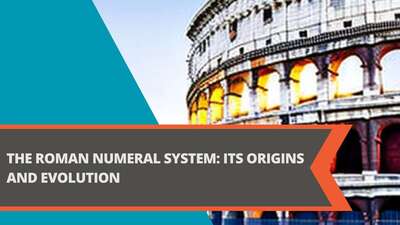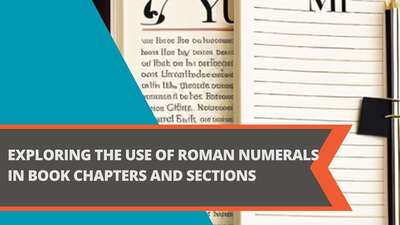Roman Numerals Converter: Definition, Formula, Examples, and Explanation
- Definition of Roman Numerals
- The Formula for Converting Numbers to Roman Numerals
- Examples of Converting Numbers to Roman Numerals
- Explanation of the Conversion Formula
- Question and Answer FAQ
- Q: Why are Roman numerals still used today?
- Q: How do you convert Roman numerals to numbers?
- Q: How do you convert numbers to Roman numerals?
- Q: What are some common uses of Roman numerals?
- Q: What is the largest number that can be represented in Roman numerals?
- Conclusion
Roman numerals are an ancient numeral system that originated in ancient Rome. They are still used today for various purposes, including clock faces, book chapters, and movie titles. Although they are no longer used as a primary numeral system, they are still an essential part of our cultural heritage.
A Roman numeral converter is a tool that converts numbers into Roman numerals or vice versa. This article will explain the formula for converting numbers to Roman numerals and provide examples to help you understand the process.
Definition of Roman Numerals
Roman numerals are a numeral system consisting of a combination of letters from the Latin alphabet. There are seven letters used in Roman numerals: I, V, X, L, C, D, and M. Each letter represents a different value:
- I represents the number 1.
- V represents the number 5.
- X represents the number 10.
- L represents the number 50.
- C represents the number 100.
- D represents the number 500.
- M represents the number 1,000.
These letters can be combined to represent any number. The basic rule for writing numbers in Roman numerals is to write the largest values first and then add the smaller values. There are also specific rules for subtracting values and repeating letters. We will discuss these rules in more detail in the following sections.
The Formula for Converting Numbers to Roman Numerals
The formula for converting numbers to Roman numerals is based on the use of the seven letters described above. To convert a number to a Roman numeral, follow these steps:
- Write down the number to be converted.
- Divide the number by the largest possible value that can be represented by a single letter. For example, if the number is 45, divide it by 10 (the largest value represented by a single letter that is smaller than 45). The result is 4 with a remainder of 5.
- Write the letter that represents the value that was divided into the number (in this case, X) that many times (in this case, four times).
- Write the next letter that represents the next highest value that can be subtracted from the remaining number (in this case, V, which represents 5).
- If there is still a remainder, repeat steps 2-4 until the remainder is 0.
For example, to convert the number 45 to a Roman numeral:
- Write down the number 45.
- Divide 45 by 10. The result is 4 with a remainder of 5.
- Write the letter X four times: XXXX.
- Write the letter V: XXXXV.
The Roman numeral for 45 is XLV.
Examples of Converting Numbers to Roman Numerals
Here are some more examples of converting numbers to Roman numerals:
- 1: I
- 2: II
- 3: III
- 4: IV
- 5: V
- 6: VI
- 7: VII
- 8: VIII
- 9: IX
- 10: X
- 11: XI
- 12: XII
- 13: XIII
- 14: XIV
- 15: XV
- 16: XVI
- 17: XVII
- 18: XVIII
- 19: XIX
- 20: XX
- 25: XXV
- 30: XXX
- 40: XL
- 50: L
- 60: LX
- 70: LXX
- 80: LXXX
- 90: XC
- 100: C
- 200: CC
- 300: CCC
- 400: CD
- 500: D
- 600: DC
- 700: DCC
- 800: DCCC
- 900: CM
- 1000: M
- 2000: MM
- 3000: MMM
Explanation of the Conversion Formula
The conversion formula may seem complicated at first, but it is based on a simple principle: the use of subtraction and addition to represent numbers. In Roman numerals, smaller values can be placed before larger values to subtract them, while larger values can be placed before smaller values to add them. Here are the basic rules:
- A letter representing a smaller value placed before a letter representing a larger value subtracts the smaller value from the larger value. For example, IV represents 4 (5-1).
- A letter representing a smaller value placed after a letter representing a larger value adds the smaller value to the larger value. For example, VI represents 6 (5+1).
- Letters can be repeated to represent larger values. The maximum number of times a letter can be repeated depends on the letter. I, X, and C can be repeated up to three times, while V, L, and D cannot be repeated.
- A letter representing a larger value cannot be placed before a letter representing a smaller value. For example, 4 cannot be represented as IIII, but must be represented as IV.
By following these rules, any number can be represented in Roman numerals.
Question and Answer FAQ
Q: Why are Roman numerals still used today?
A: Roman numerals are still used today for various purposes, including clock faces, book chapters, and movie titles. They are also an important part of our cultural heritage and are often used to add a touch of elegance and tradition to design elements.
Q: How do you convert Roman numerals to numbers?
A: To convert Roman numerals to numbers, you can use the conversion formula explained above or use an online converter tool. Simply enter the Roman numeral in the converter and it will give you the equivalent number.
Q: How do you convert numbers to Roman numerals?
A: To convert numbers to Roman numerals, you can use the conversion table provided above or use an online converter tool. Simply enter the number in the converter and it will give you the equivalent Roman numeral.
Q: What are some common uses of Roman numerals?
A: Roman numerals are commonly used for numbering chapters in books, sections of legal documents, and acts of plays and operas. They are also used for indicating the date on buildings and monuments, as well as for numbering kings and queens.
Q: What is the largest number that can be represented in Roman numerals?
A: The largest number that can be represented in Roman numerals is 3,999, which is represented as MMMCMXCIX.
Conclusion
Converting between Roman numerals and numbers is an important skill for anyone interested in history, art, or design. While the conversion formula may seem complicated at first, it is based on a simple principle of subtraction and addition. By following the basic rules of Roman numerals, any number can be represented in this elegant and timeless numbering system. Whether you are designing a clock face or numbering chapters in a book, Roman numerals are sure to add a touch of tradition and style.







